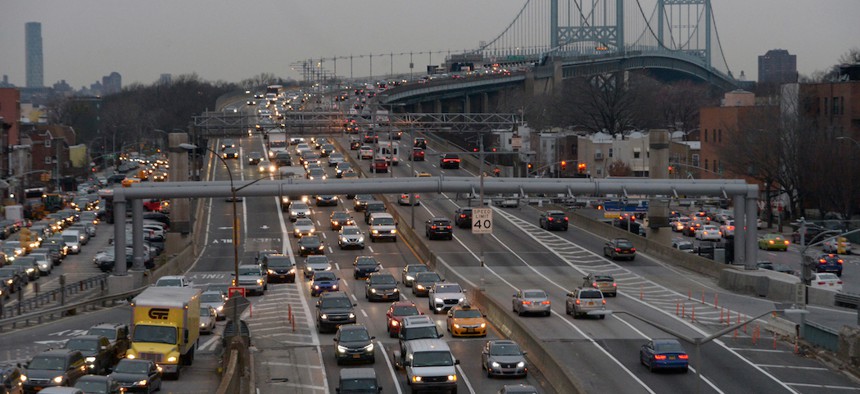New York City made history a year ago when it became the first city in the United States to approve a congestion pricing program. Passed in the state budget last year, New York’s congestion pricing program – which will be overseen by the Metropolitan Transportation Authority – could charge a toll of $11 to $14 at peak times for vehicles driving in Manhattan south of 60th Street. Congestion pricing has two goals: discourage driving in the most congested area of New York City, and make billions of dollars off the people who decide to drive in that area anyway. Once the system is in place, congestion pricing is expected to raise $1 billion annually, which would be used to help pay for subway repairs and upgrades.
Today, as the MTA braces for staggering budget shortfalls of billions of dollars due to the coronavirus pandemic, it seems like a difficult time to launch congestion pricing, even though the tolling program would be a valuable source of revenue for the strained transit system. Like signal modernization projects for the subways, congestion pricing strikes that ironic balance between being more necessary than ever and more difficult to pull off than ever.
Even before the coronavirus pandemic, congestion pricing was in a state of limbo. Technically, congestion pricing could start as early as January 2021, but those plans hit a snag earlier this year because the federal government hasn’t approved the project yet. In February, Gov. Andrew Cuomo said that approval should have been “pro forma” and suggested that it was being held hostage by President Donald Trump.
And even before federal approval became an issue, the MTA was already being slow to appoint a board of experts – called the Traffic Mobility Review Board – who would be tasked with coming up with the exact tolling scheme and prices. Those are all details that have to be ironed out before the state can actually put the tolling program into action.
The long and short of it? Before the coronavirus pandemic, it would’ve been an impressive feat for the MTA to pull off congestion pricing by the beginning of next year. Now, with the virus pulling attention, workers and potentially money away from congestion pricing, a January 2021 start date seems next to impossible.
MTA officials confirmed as much at their virtual board meeting on April 22. “Given a combination of the pandemic and the delays in Washington, a January 2021 start is unlikely, but we are doing everything we can on our side, on the MTA side, to advance it as much as possible,” MTA Chairman and CEO Patrick Foye said.
But the MTA wants to make it clear that congestion pricing will happen. “Central business district tolling is not dead,” Foye said at an earlier virtual press conference on April 16. Foye added that the agency is waiting on an indication from the U.S. Department of Transportation on whether the state will have to conduct a full-scale environmental review of congestion pricing – which can take years – before the project can get federal approval.
Transportation experts, too, said that it’s imperative for congestion pricing to be put in place in order to produce much-needed revenue for the MTA’s operating and capital budgets. That remains true, even if fewer cars are driving into Manhattan because of the coronavirus and it doesn’t produce as much revenue as expected, some said. “It’s going to be a recurring revenue source,” Rachael Fauss, a senior research analyst at the good-government group Reinvent Albany, said. “So getting it up and running as soon as possible, even if it’s going to bring in fewer dollars in the first year or two – in some ways, in the long picture, that’s almost water under the bridge.”
Of course, even if the state can get the necessary federal approval, safely build the necessary infrastructure on streets to actually conduct tolling, and get the Traffic Mobility Review Board set up in the coming months, unanswered questions remain. When first approving congestion pricing, a major political sticking point was whether certain geographic areas or industries would be exempt from the tolls. That fight is likely to be revived, with groups making cases to be exempt related to the coronavirus. “You could conceivably see the whole restaurant industry saying, ‘Our deliveries can’t shoulder this fee because we can’t shoulder the fee.’ Or Broadway saying, ‘We have to encourage people to drive in and see a play,’” Nicole Gelinas, a senior fellow at the Manhattan Institute, said. But with so many other remaining questions about congestion pricing, deciding whether to hand out exemptions to a tolling program that hasn’t officially been approved might be borrowing trouble.
NEXT STORY: The unanswered questions about antibody testing


